
Wine Culture Magazine
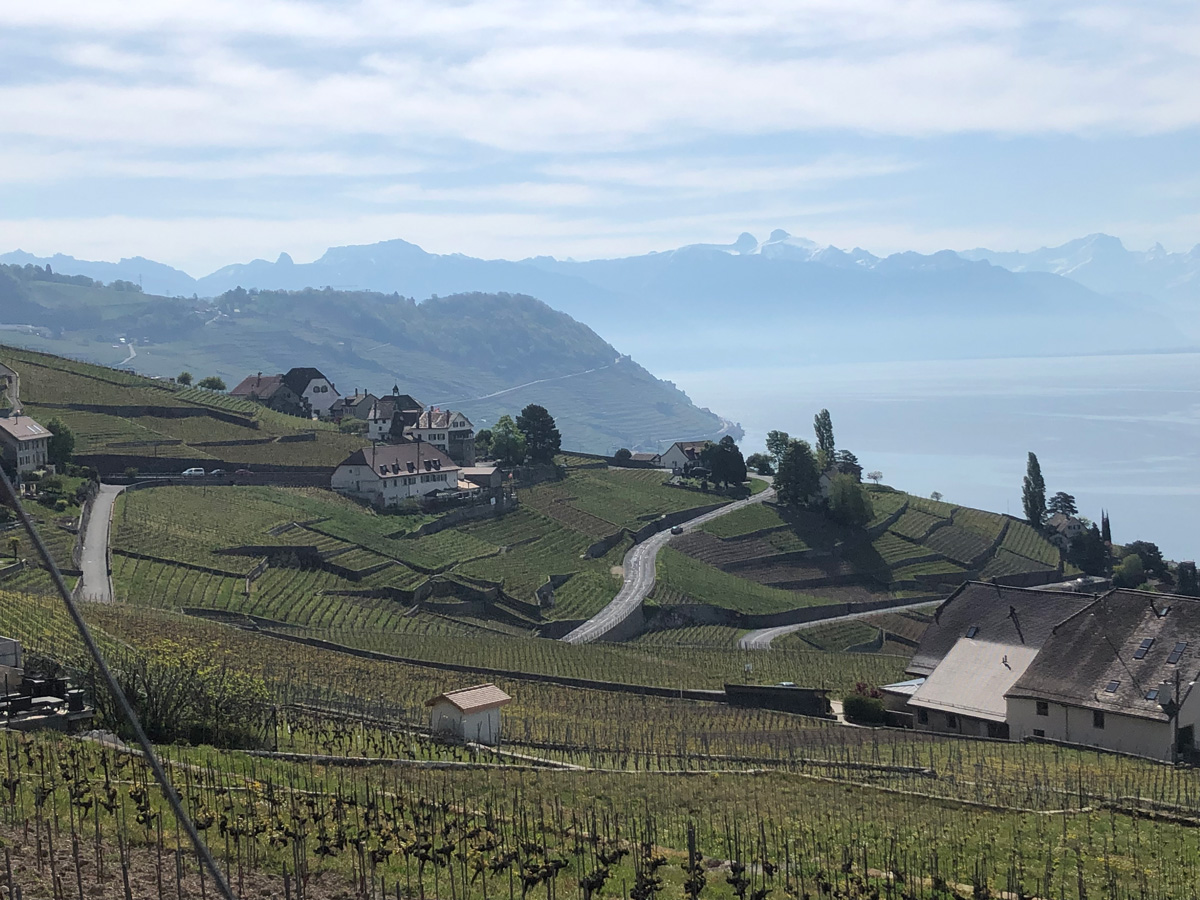
In the AOC Lavaux near Lausanne, Chasselas is planted in steep, narrow terraces that must be worked by hand.
Joanne Sasvari photo
There’s a lot of chat about “heroic” viticulture these days. But when you stand amid the vertiginously narrow terraces of Switzerland’s AOC Lavaux region, you realize just what that actually means.
These skinny vineyards encircled by stone walls, some only a few rows wide, are stacked steeply up a mountainside that plunges dizzily down to Lake Geneva. Everything here is done by hand—indeed, it would be impossible for a tractor to access these vines. Some slopes are so steep, the vintners have had to install cable cars to reach them.
Challenging though the terrain is, wine has been grown here since the Romans came through in the 2nd century BCE, though it mostly dates back to the Benedictine and Cistercian monasteries of the 11th and 12th centuries. And what has largely been grown here in the last 2,000 years or so is a delicately fruity white grape called Chasselas.
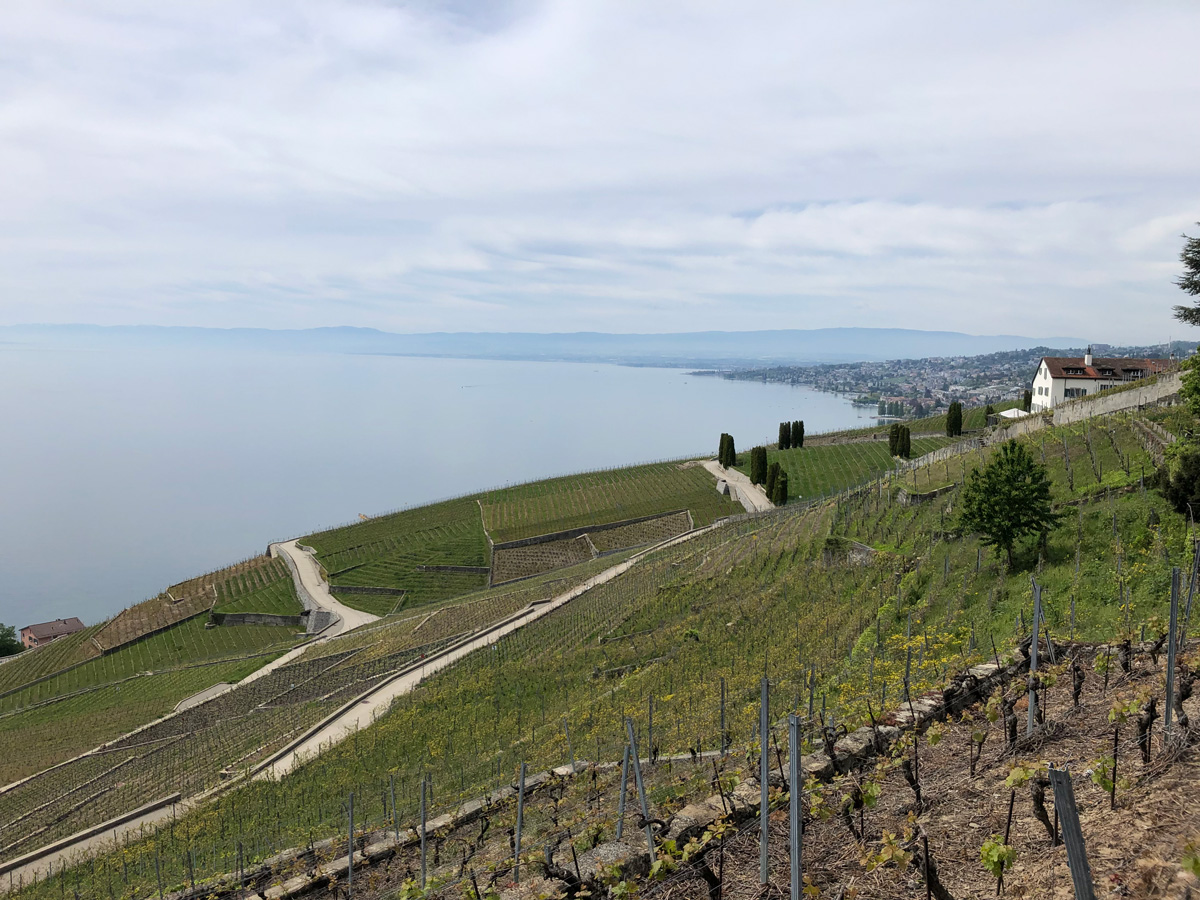
Joanne Sasvari photo
“It is my favourite white wine because I grew up here,” says winemaker Jacques Joly, of Domaine Joly in Lavaux, which not only produces wine but offers holiday apartments and serves table d’hôte dinners for 10 to 20 people. “I got Chasselas in the bottle when I was a baby.”
Chasselas is not a grape familiar to many North American palates. It is grown in France, Germany, Portugal, Hungary, Romania, New Zealand, Croatia and Chile, and is a promising variety for marginal wine regions. The legendary French wine producer Michel Chapoutier, for instance, is looking at buying vineyards in England, specifically to plant Chasselas.
Most of all, it is associated with Switzerland, where it most likely originated sometime in the 15th or 16th century.
A little Chasselas is grown here in B.C., notably by Quails’ Gate and St. Hubertus. And after tasting dozens of Chasselas in Switzerland, I’m starting to wonder if there shouldn’t be more.
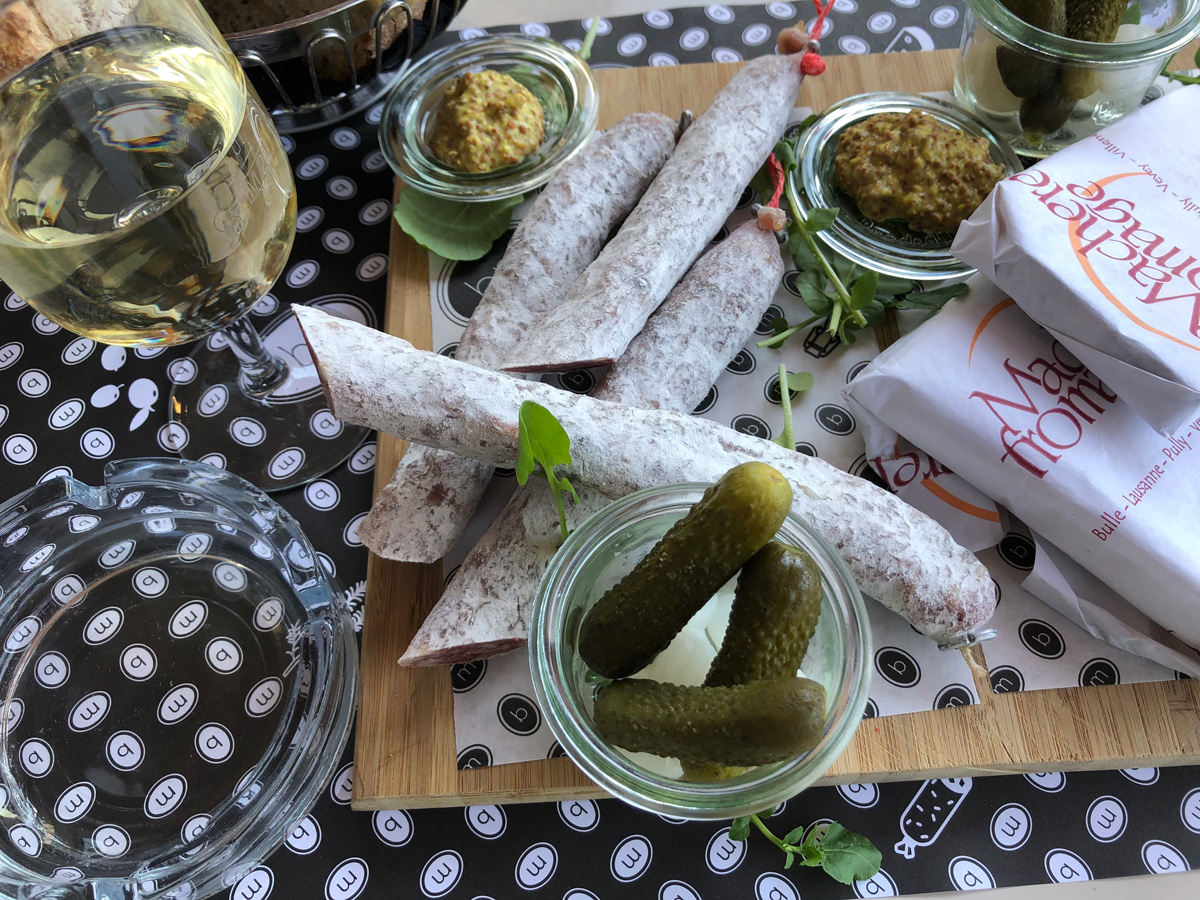
At Lausanne’s Casino de Montbenon, an afternoon snack of cheese and sausage is best enjoyed with an easy-going glass of Chasselas. Joanne Sasvari photo
Chasselas, you see, is exactly the type of wine we’re craving these days. Light, fresh and relatively low in alcohol (usually between 11 and 13 per cent ABV), it is a fairly neutral grape with flavours of apples, apple blossom, mint, melon and sometimes just a hint of smoke. It has a medium-high acid and often a pleasing minerality.
All of this makes Chasselas a very food-friendly wine, especially when paired with cheese, whether it’s a creamy Tomme Vaudoise served along with bread and dry-cured sausage or a nutty Gruyère melted into fondue or smoky raclette oozing over boiled potatoes.
Chasselas is also highly terroir expressive and, luckily for us, those who make it rarely cover up the character of the soil and climate with oak.
“We in Switzerland are absolutely not a fan of oak taste,” says winemaker Guillaume Potterat, the youngest generation of a winemaking family that dates back to at least 1480. That’s when Domaine Potterat was built in the village of Cully; today, ancient, dust-covered bottles linger in shadowy corners of its dim cellar and a venerable wisteria stretches across the tasting patio.
His is just one of the 150-family-owned wineries in the Lavaux region, which is located in the canton of Vaud, right on the outskirts of Lausanne. The steep alpine slopes here are striped with some 10,000 terraces bordered by 400 kilometres of stone walls, still made from local sand and stone the way they have for centuries.
This is not a high-volume wine region, but a carefully, meticulously, handcrafted one—so much so that in 2007, 830 hectares of Lavaux’s terraced vineyards were recognized as a UNESCO World Heritage Site.
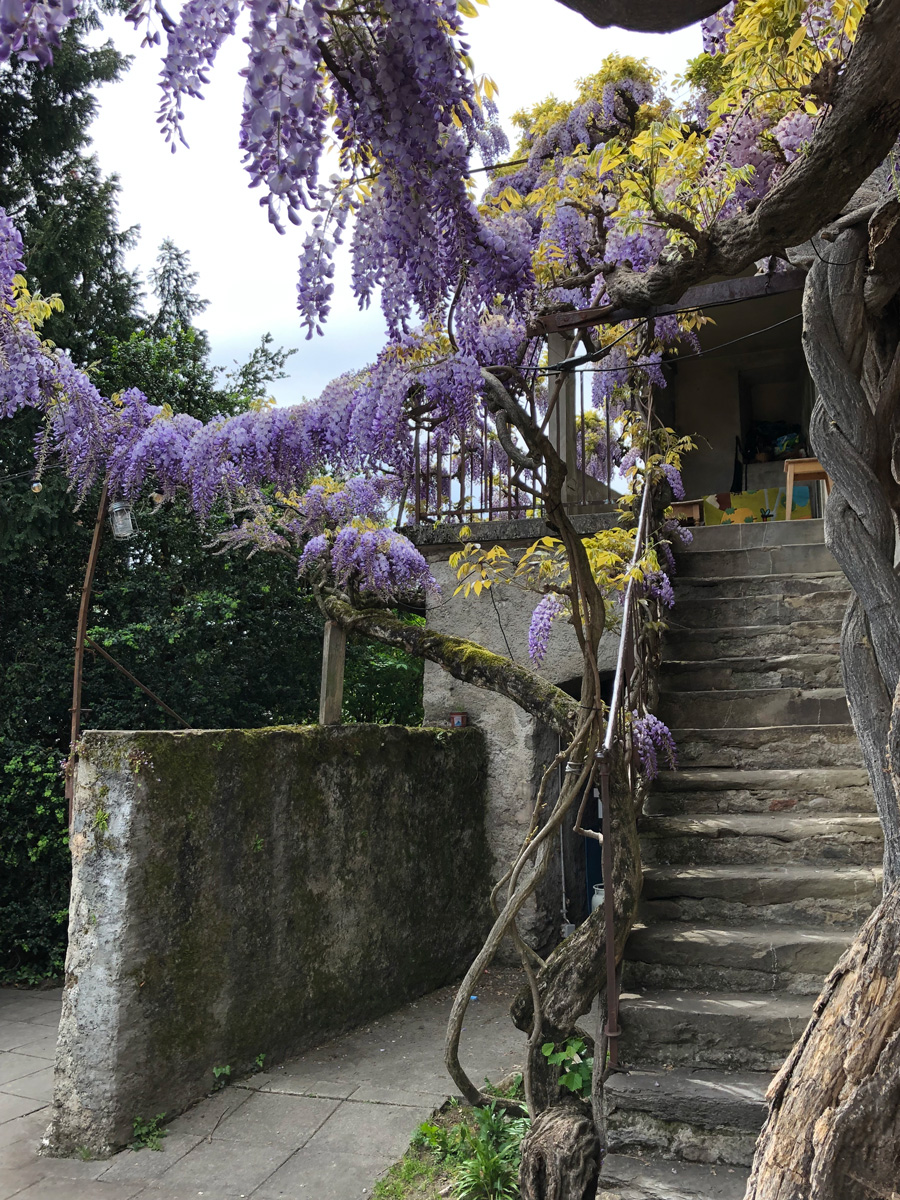
Domaine Potterat in the village of Cully dates back to 1480. Joanne Sasvari photo
Visitors to the region should start their exploration at the Maison Lavaux, an interpretive centre that features a large mural depicting the characters, traditions and inside jokes of the region—the local jazz festival, the nude beach, the house where Charlie Chaplin once lived, the old vineyard worker huts that have been transformed into B&Bs or tasting rooms, the biennial race of the quirky three-wheeled winery vehicles called tracassés, and, of course, the lake.
Lake Geneva (also known as Lac Léman) not only moderates the climate, making it possible to grow grapes here in the Alps, it was also for centuries the main transportation route for getting wine to market. It was only in the 19th century and the advent of the railways that tourists began to arrive.
Today, ferries, fishing boats and scenic cruises still ply its waters, and in the hillsides above, farmers still tend their gobelet-style vines much as generations before them have done.
“It’s completely traditional. Everything is made by hand,” says Potterat, whose winery produces four different styles of Chasselas. “It’s hard work, but because it is one of the most beautiful wineries in the world, we love to do it.”
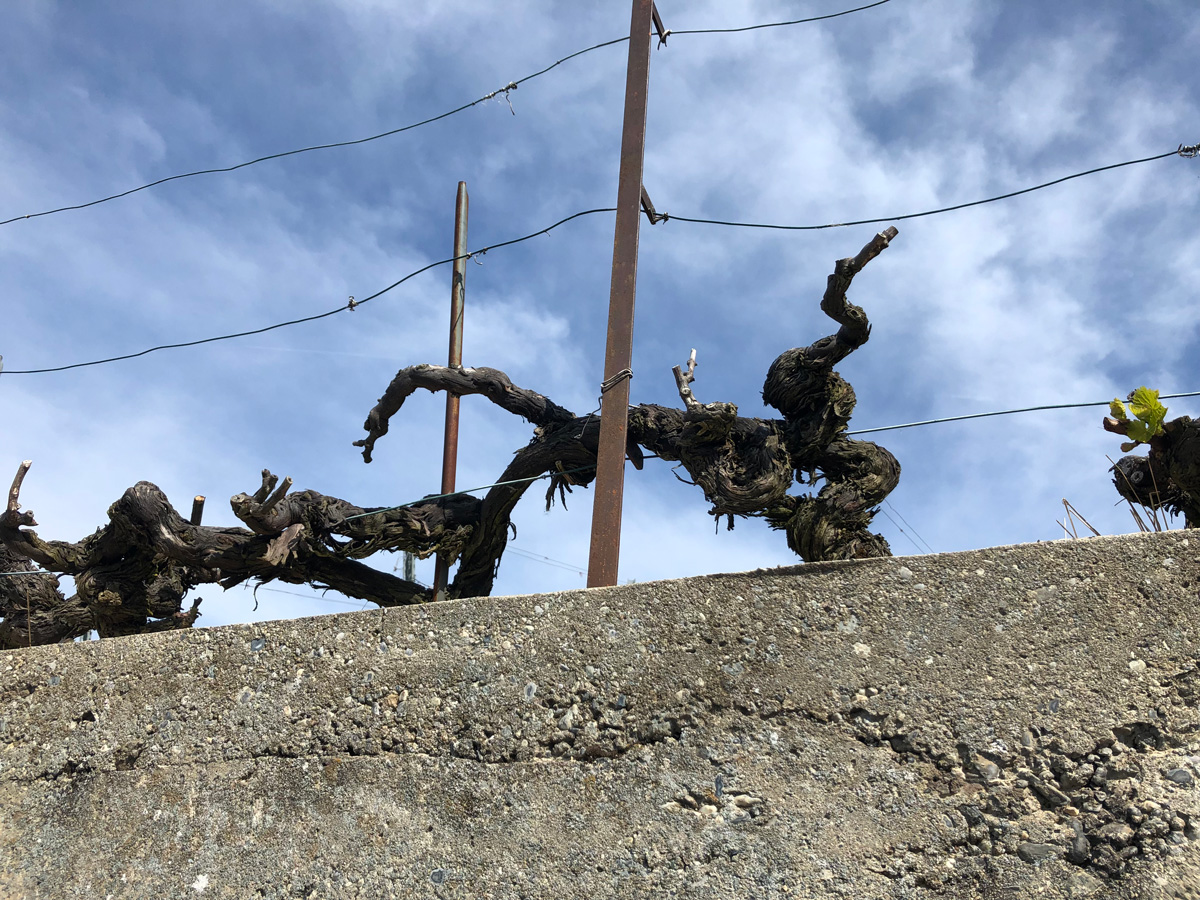
A gnarly old gobelet-style Chasselas vine in the AOC Lavaux near Lausanne. Joanne Sasvari photo
Air Canada flies into Geneva; from there it is an easy train ride to Lausanne, and then on to Lavaux. For information on the exceptionally convenient Swiss Travel Pass, visit swiss-pass.ch.
In Lausanne, accommodation doesn’t come more opulent than the glorious, historic Beau Rivage Palace, brp.ch. For something a little less luxe, the Mövenpick is clean and convenient, with a great location near the lake, movenpick.com. If you want to stay right in Lavaux, Domaine Joly offers cosy guest rooms, cave-joly.ch.
For more information visit myswitzerland.com or myvaud.com.

Quails’ Gate Chasselas-Pinot Gris-Pinot Blanc 2021
(Okanagan Valley, B.C., $19.99)
Lemon, pear, honeydew, peach blossom, fruity, mineral.

St. Hubertus Oak Bay Estate Winery Chasselas 2021
(Okanagan Valley, $19.50)
Grassy, white flowers, lemon zest, delicate.

Joanne Sasvari is editor of Vitis and The Alchemist magazines. She also writes about food and drink for WestJet and Vancouver Sun, and is author of the Wickaninnish and Vancouver Eats cookbooks.

Joanne Sasvari is editor of Vitis and The Alchemist magazines. She also writes about food and drink for WestJet and Vancouver Sun, and is author of the Wickaninnish and Vancouver Eats cookbooks.
© 2024 Vitis Magazine